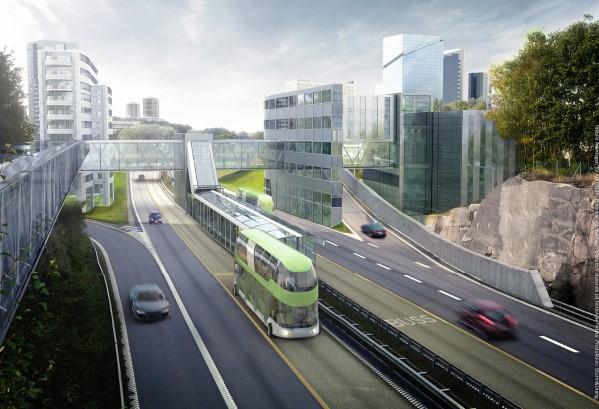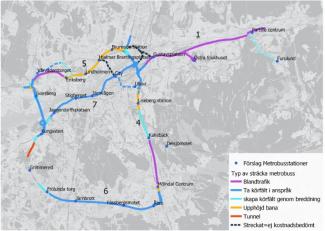Workshop – research project about the Metro bus concept
Do you want to create a joint project regarding safety aspects at exchange points along a Metro bus line? Then this activity is for you! The goal for this workshop is to create a research project of investigating the nodes of public transport in collaboration between SAFER and K2 researchers. The main focus will be on an exchange point in a Metro bus system. A potential financier is the Swedish transport administration through the research portfolios.
Background to the Metro bus concept
Decision to, or intentions to, introduce Bus Rapid Transit (BRT) solutions are becoming more and more common. These provide an opportunity to combine the efficiency of rail traffic with short travel times and high capacity but to high investment costs with normal bus traffic that are less costly but also limited in capacity and times. BRT has high travel capacity, but with fever stops and thereby shorter travel times than ordinary bus systems.
The Metro bus proposal in Gothenburg is a high capacity BRT in a ring around Gothenburg with connection to the city centre with large bus stops close to both residential and business areas (please see the Åtgärdsvalsstudie attached below). The plan is to allow platooning of at least two vehicles with up to 100 people in each vehicle.
One aspect of the Metro bus concept is that the bus stops are typically located very close to roads with large amounts of traffic (including motorways). Another is that there are often many people getting on and off at each stop. In addition, it can be found in the study that it is important to have bike lanes and pedestrian connections from the bus stops to the residential and business areas.
Suggested routes can be found in the figure below:
Target groups to the Metro bus - identified
- Those who travel to Gothenburg from the city's largest commuter routes from surrounding municipalities and suburbs, where the train is not an attractive alternative.
- Travel between the city's designated main areas and destination points, but where other public transport cannot offer sufficiently attractive travel times.
- Those who today travel to the city to change transpor, but who do not have their final destination there.
In the study, security is mentioned in this context:
“At pure exchange points, the security aspect becomes extra important as these can be established even in places where there are not so many people present. At the same time, security is an overall important parameter that also includes the road to and from the stations. It is also important that the Metro bus system is connected in an attractive way with the rest of the public transport network and connected to the pedestrian and cycle path network.”
In addition, the following potential conflicts of needs and targets are raised:
1. Which routes are to be seen as prioritized, towards the centre or across?
2. Public transport vs cars (accessibility)
3. Public transport vs business/goods transports
4. The complete journey (from station to end goal)
5. More people close to roads with large amount of traffic, thereby exposed to bad environment (noise, particles, air quality)
Project idea
The proposed target for the project is the following:
The design of a metro bus stop and priorities regarding different mobility services and ways to travel, in relation to traffic safety, personal security, health aspects and attractivity (to use this system rather than an own car), connecting to point 4 and 5 above.
One possible location to focus on could be Kallebäck (text from the study, see attachment below):
“Kallebäck is planned for a major housing expansion and how this area will be provided with public transport is not clear, but buses, City bus and Metro bus, are seen as reasonable alternatives. However, the accessibility for buses is not very today, especially on the Kallebäck-Gullbergsmot section, and is also expected to be so in the future, despite the opening of the Marieholm tunnel. ”
Workshop set-up
- Short introduction
- Brief discussion about the Metro bus concept and the understanding of this
- Points to discuss in groups:
- Scope: Which aspects are most important, both in terms of effects and design
- Method: how to address the questions and what knowledge to we need to create
- Project form: organization, who to lead etc
- Summary
WELCOME!
Please note that this workshop is for researchers at SAFER and K2 only!


